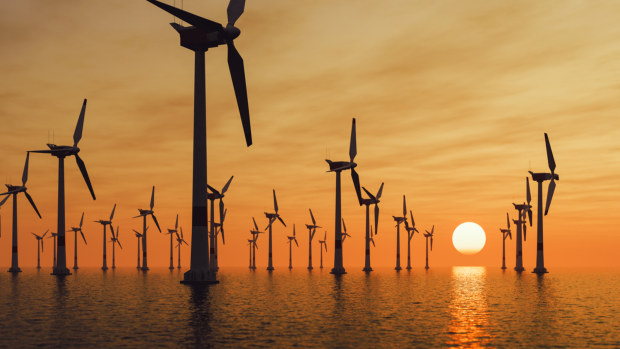While China will lead this activity, offshore wind farms are being planned across Asia Pacific, including Taiwan, Philippines, Bangladesh, Vietnam and South Korea.
Offshore wind farms are established across Europe and the US, although they are presently facing challenges like inflation, rising costs and supply chain pressure.
Meanwhile, the new UK government has pledged to make significant investments in offshore wind in addition to the numerous wind farms that already dot the UK’s shores.
Australia abounds in natural advantages around offshore wind energy, including a vast coastline and sparse, spread out population. As an energy source, offshore wind also addresses some of the objections communities have to onshore wind farms, like noise pollution and disruption to agricultural activities and could repurpose existing energy assets linking into existing transmission systems built for retiring coal fired plants boosting the business case.
There are no operating offshore wind projects in Australia yet but building blocks for the sector are taking shape. With ambitious greenhouse gas reduction targets and an emissions-heavy energy sector, “we need to move faster to transition the energy grid to renewable sources and offshore wind is an opportunity to speed things up”, says David Scrivener, Westpac institutional bank’s global head of energy, infrastructure and resources.
“There’s also potential to create a significant number of new jobs to support the sector.”
A big step forward is the federal government’s naming of six priority areas for offshore wind development, with the capacity to generate up to 80 GW across the nation. The award of the feasibility licences for Australia’s first offshore wind zone off the coast of Gippsland, Victoria is another important milestone.
Creating the right conditions
Getting the business model right is one of the biggest hurdles to developing a viable offshore wind sector in Australia.
Critics point to the higher cost of offshore wind, estimated at around $170/MWh, compared to onshore wind’s cost of approximately $80/MWh according to GenCost. This is due to factors like the difficulty of constructing wind farms in the sea and maintenance challenges given the remote nature of the turbines. Although these figures don’t account for project idiosyncrasies. For instance, project economics are better in windier areas like Bass Strait. Plus, long-term, the cost of offshore wind is expected to decline significantly, according to the Victorian government’s Department of Environment, Land, Water and Planning 2021-22 annual report.
Who bears the cost of developing the offshore wind energy sector and how prices will be determined is key. Government support, private investment and innovative financing models will likely play a role until offshore wind achieves cost parity with other renewable sources. Stable government policy is also essential to ensure the budding offshore wind industry has confidence the goalposts in which it’s working won’t move too much.
“Above all else, the success of Australia’s offshore wind industry will depend on certainty through strong policy and enduring political support, so investors can be confident that they are getting strong returns,” says Kane Thornton, chief executive of the Clean Energy Council.
“We also need the supporting framework on which a viable offshore wind sector can be built,” says Thornton.
“Australia needs to urgently fast track the underlying infrastructure to support the significant pipeline of major renewable energy projects under development as we move away from coal and gas,” says BlueFloat Energy country manager, Australia, Nick Sankey, whose business is developing three large offshore wind projects across multiple sites around the nation.
Right now, potential offshore wind project developers like BlueFloat are undertaking feasibility studies to explore how offshore wind projects may operate around the coastline. But the issues the sector faces need to be addressed for projects to make economic sense and secure financial sponsors.
Australia has a chance to learn from overseas experience. “We need to look at what’s been done globally in terms of best practice to provide the right level of financial incentive for offshore wind,” says Westpac’s Scrivener.
An example is the UK’s contracts-for-difference model. CFDs in offshore wind generation guarantee wind farm developers a fixed price for their electricity and the developer is paid even if the market price falls below the agreed strike price, ensuring a predictable income stream. This reduces financial risks and encourages investment.
The sixth CFD allocation round saw a record number of clean energy projects awarded contracts, totalling 131 projects with a combined capacity of 9.6GW, more than double the previous year’s round, enough to power 11 million homes.
“This creates something bankable. Australia has quite volatile power markets and we can learn from other markets’ lessons to achieve our renewable energy and net zero targets,” says Scrivener.
To learn more, please visit Westpac institutional bank.




